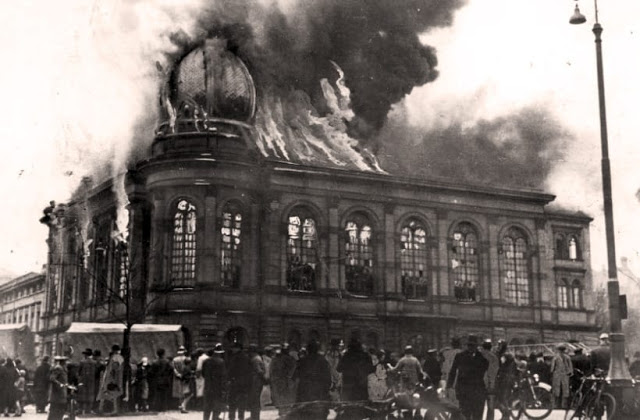- The violence of Kristallnacht has been greatly exaggerated. (The canonical figure for deaths is not in the thousands as one might suppose, but only 91. Heinrich Haertle however says that the number was 35.)
- German authorities had strong reasons for not wanting such violence, and in fact took measures to stop it when they found out.
- A conspiracy of Zionist Jews instigated the violence so that the British government would not ban Jewish immigration to Palestine.
Points 1 and 2 are indisputable. Point 3 is somewhat speculative, but it answers the question of how violence could erupt throughout Germany all at once, contrary to the interests of the German government, without any organizing factor in view.
Of course, there must have been many German people angry at the Jews, not only for the assassination of their diplomat but for the hardships of the worldwide boycott against Germany organized by the World Jewish Congress in 1936. At the same time, however, riots do not erupt simultaneously in many places without organized instigation.
In the aftermath of Kristallnacht, the National-Socialist government made an effort to prevent repetition of such an event. Since Kristallnacht seemed to be an expression of the German people’s rage against the Jewish presence and especially Jewish commercial strength in Germany, the government sought to placate that rage and to prevent another such outburst. First, a large fine was imposed on Germany’s Jewish population to pay the cost of repairs. The National-Socialist government then bought Jewish-owned businesses so that they could be placed under non-Jewish ownership (aryanized), so that there would no longer be large numbers of Jewish-owned shops to provoke resentment. Under the Rublee Plan, adopted several months after Kristallnacht, every Jew under the age of 45 was expected to emigrate, and Jews who could not afford to emigrate received financial assistance to make it possible.

